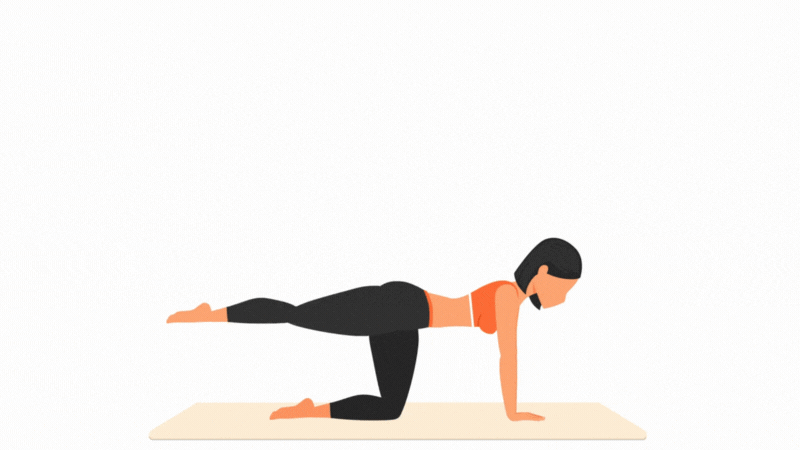Imagine waking up every day with a sharp pain shooting down your arm, making even the simplest tasks unbearable. This is what many individuals suffering from cervical radiculopathy go through everyday.
Compression of nerve roots in the neck causes this condition.. Often in such cases, conservative treatments like therapies, massage, and pain-killers don’t do any good and surgery is the only treatment that promises long-term relief. If you find yourself in this situation, this article will provide a comprehensive view of Cervical Radiculopathy, its symptoms, causes, and when Cervical Radiculopathy surgery is performed. It will help you understand your situation better and make an informed decision.
See a Spine Surgeon in Los Angeles: If you have been diagnosed with cervical radiculopathy and looking for treatment or you want to see a doctor for diagnosis, you can schedule an appointment with Moksha Ranasinghe, MD at Southern California Brain & Spine Surgery.
Cervical Radiculopathy

Cervical refers to the upper portion of the spinal column that makes up your neck and Radiculopathy means injury or damage to nerve roots in the area where they leave the spine. Pinching or compressing nerves in the neck causes cervical radiculopathy. It can cause patients to experience severe pain, numbness and weakness in the arms and hands.
Symptoms
The symptoms of cervical radiculopathy can vary in severity and frequency, but mostly include:
- Persistent neck pain
- Radiating arm pain that extends down the arm
- Tingling or numbness in the arm or hand
- Weakness in the arm or hand causing difficulty in performing routine tasks.
Causes
Cervical radiculopathy is caused due to a pinched nerve in the neck and the nerve can be entrapped due to several factors including:
- Spinal stenosis
- Herniated disc
- Degenerative changes in the cervical spine
- Spinal cord injury
Cervical Radiculopathy Surgery
Doctors go for surgery when there is no possibility of improvement with conservative methods such as physical therapy, pain management, and activity modification. Doctors immediately put patients with severe and progressive symptoms on surgical treatments.
General Procedure for Cervical Radiculopathy Surgery
The general procedure for cervical radiculopathy surgery typically involves making a small incision in the front or back of the neck, depending on the type of surgery being performed. During the procedure, the surgeon will access the cervical spine to remove or decompress the affected nerve root, or to replace a damaged disc. Nowadays, doctors also use minimally invasive methods with endoscopic or microscopic instruments to treat Cervical Radiculopathy. Minimally invasive spine surgery is less painful and also has a shorter recovery period.
There are several surgical options for treating cervical radiculopathy, however, the purpose of all procedures is common i.e., to remove the compression from the pinched nerve.
Anterior cervical discectomy and fusion (ACDF)
It is a two-fold procedure in which a cervical disc is first removed that was compressing the nerve results in a gap in the vertebrae. In the second phase, surgeons fuse together the adjacent vertebrae to provide stability to the spine. As the name suggests, they perform this procedure by making an incision in the front of the neck.
Cervical Laminectomy
During this procedure, surgeons remove a portion of the bone and ligament in the back of the neck to increase the size of the spinal canal and relieve pressure on the spinal cord or nerve roots, as opposed to cutting a part of the vertebra in discectomy. Surgeons typically perform this procedure using minimally invasive techniques as an outpatient procedure.
Cervical Laminoforaminotomy
Surgeons remove a portion of the bone and ligament from the side of the cervical vertebrae in this surgery to relieve pressure on the nerve roots. Typically, they perform this procedure as an outpatient procedure using minimally invasive techniques.
Cervical disc replacement
Surgeons perform this procedure by removing a damaged cervical disc and replacing it with an artificial disc to restore normal spinal motion and relieve pressure on the spinal cord or nerve roots. Typically, they conduct this procedure as an outpatient procedure using minimally invasive techniques.
Recovery after Cervical Radiculopathy Surgery
After the procedure, the patient is taken to a recovery room where doctors monitor him for any signs of complications. The recovery period will depend on the type of procedure performed, but most individuals can return to their normal activities and resume work and exercise within several weeks to a few months after the surgery.
Conservative Treatments for Cervical Radiculopathy

Conservative treatments are the non-invasive/non-surgical methods recommended by the doctor to treat neck pain. These treatments are the first choice when a patient comes with a complaint of pain in the cervical spine. Only individuals whose problems can be improved without surgery are subjected to these procedures.
Physical Therapy
Physical therapy can help strengthen the muscles in the neck and upper back to alleviate pain and improve the range of motion. A physical therapist can also teach you exercises to help relieve pressure on the cervical nerves.
Pain Management
Pain management techniques such as non-steroidal anti-inflammatory drugs (NSAIDs), heat or cold therapy, and epidural injections can help reduce pain and improve function.
Activity Modification
Limiting activities that put a strain on the neck, such as repetitive neck movements or heavy lifting, can help reduce symptoms of cervical radiculopathy.
Chiropractic Care
Chiropractic care can help improve spinal alignment and relieve pressure on the cervical nerves. Manipulation, traction, and massage can also help alleviate pain and improve the range of motion.
FAQs
Q. How successful is Cervical Radiculopathy surgery?
According to John et al, 80-90% of cervical radiculopathy surgeries successfully provide patients with pain relief.
Q: Are there any risks or complications associated with cervical radiculopathy surgery?
As with any other surgical procedure, Cervical Radiculopathy also has some risks associated with it. For example, surgical wound infection, nerve injury, excessive bleeding, etc.
Q. How long does it take to completely recover after the surgery?
The recovery period varies from case to case depending upon the factors like the patient’s age, the physical condition of the patient, and the type of surgery performed. Having said that, you can expect a full recovery in a time period of 4 to 12 months.



























